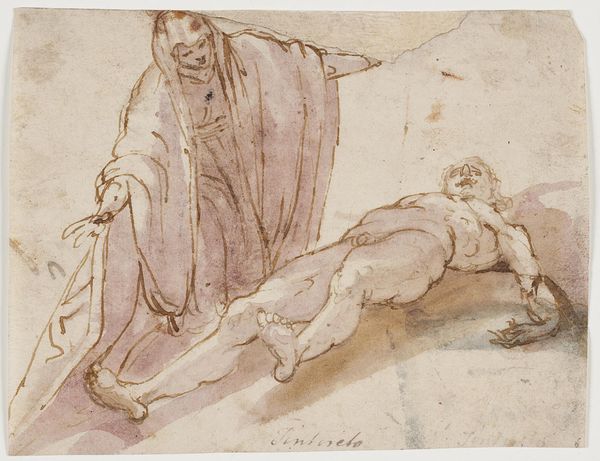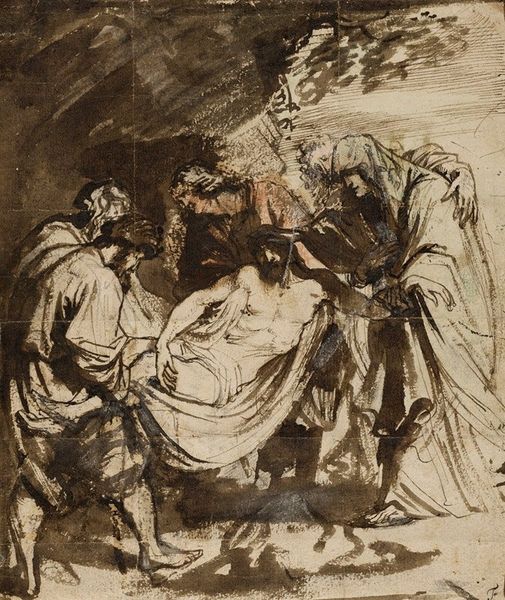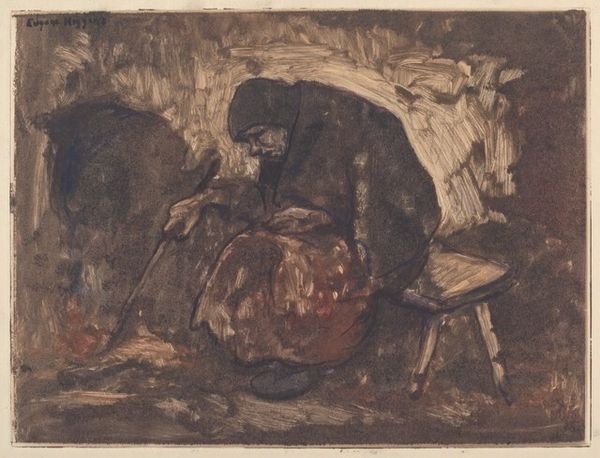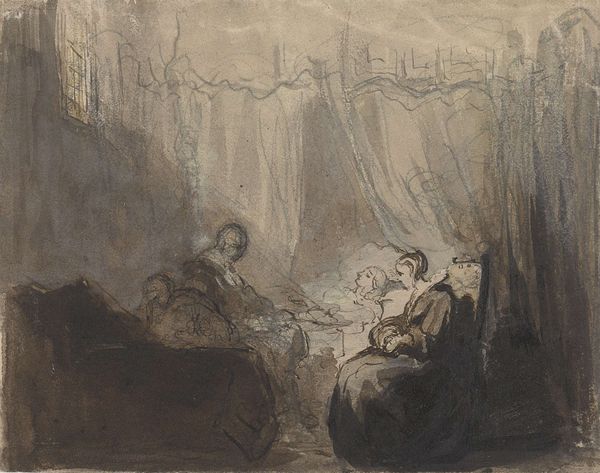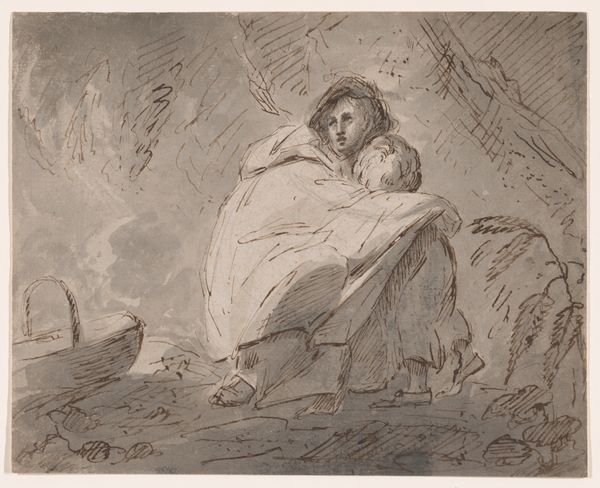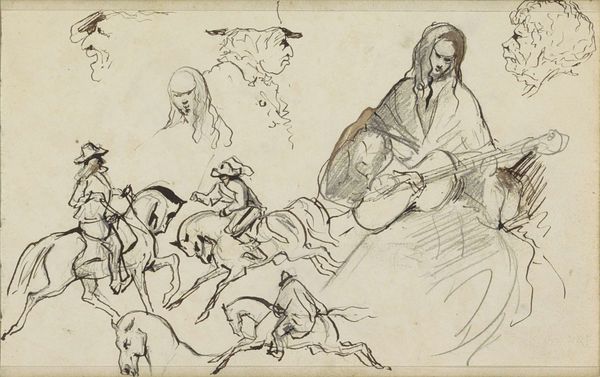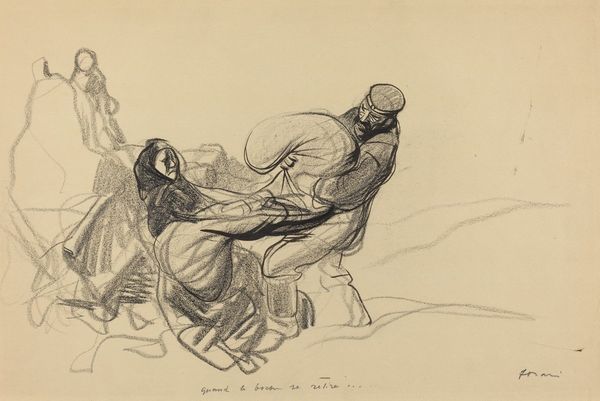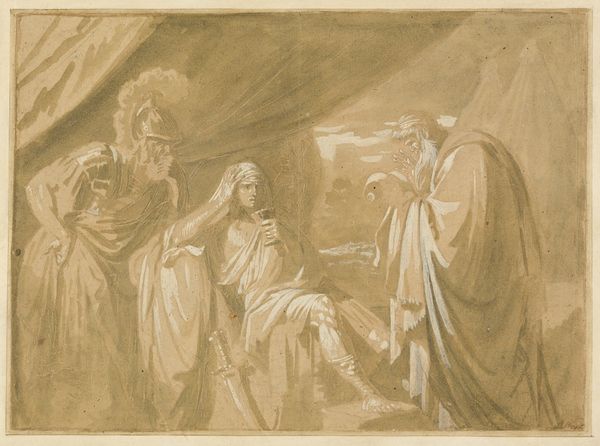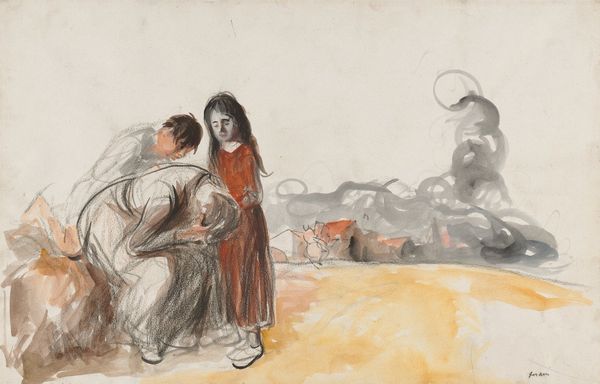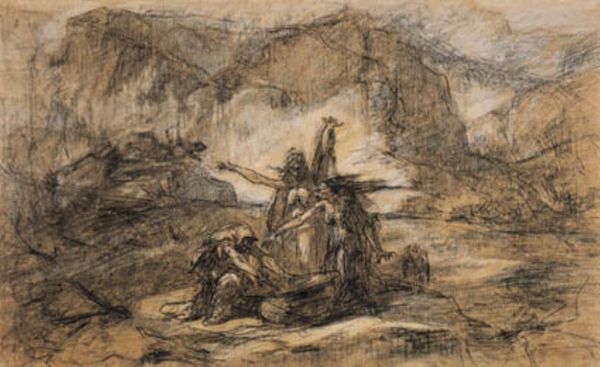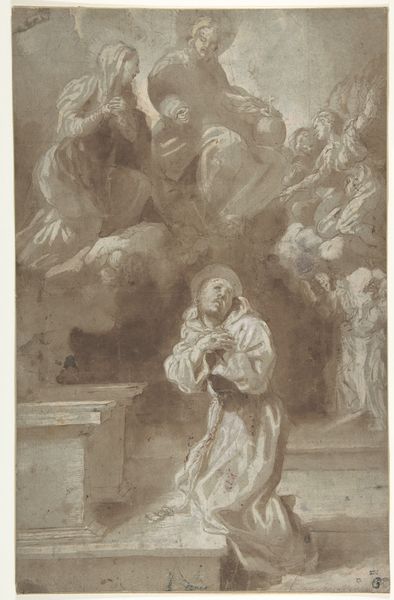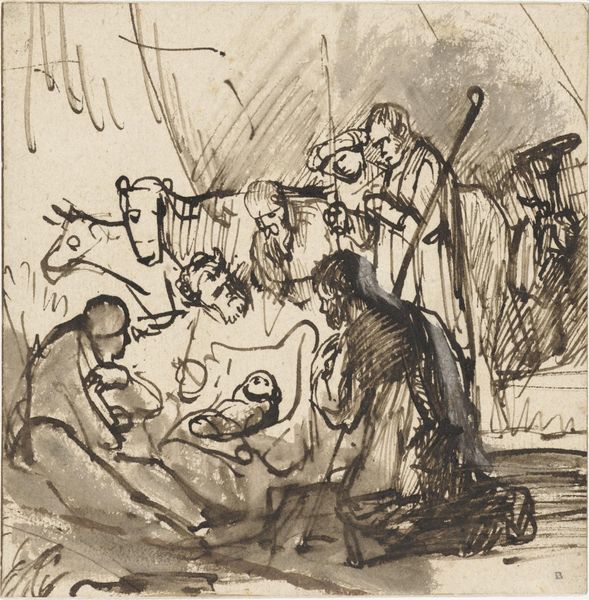
Copyright: Public Domain: Artvee
Curator: Jean-Louis Forain created "After Douai" circa 1918 using charcoal and watercolor. The palette is strikingly muted, conveying a profound sense of melancholy. Editor: It's almost monochromatic, a stark study in grays and browns. The raw materiality, particularly the rough texture of the charcoal, contributes to its heavy atmosphere. It feels immediate, visceral. Curator: Indeed. Forain's image depicts refugees fleeing during World War I. The central figure, a woman clutching a bundle, embodies grief and displacement—a Madonna figure for a war-torn world. The somber tones amplify her sorrow, don’t you think? Editor: Absolutely. And look at the visible process: the watercolour bleeds, the smudging of the charcoal. This isn't polished propaganda; it reveals the messy, almost desperate conditions of its making, reflecting the chaos of wartime. It's like he grabbed whatever materials he could and urgently documented the moment. Curator: The sketch-like quality enhances that immediacy, serving as a reminder of the brutal realities of war—the loss, the uprooted lives. In the religious art tradition, darkness is used to convey sorrow, or even fear, connecting the figure with archetypes of mourning. Her hunched posture mirrors that ancient motif. Editor: Thinking about production further, this work on paper likely allowed for quick reproduction and dissemination of the message, speaking to the urgent need to raise awareness and potentially support the refugees. We should also consider the paper itself – its sourcing, availability given wartime constraints. Curator: It definitely pushes beyond a simple landscape or figure study. The desolate surroundings become symbolic—a wasteland reflecting the devastation in their lives. It transforms the external environment into an interior, psychological space. Editor: I’m struck again by the contrast: a medium often associated with leisure, watercolor, deployed to depict the antithesis of leisure: trauma, forced displacement. The inherent qualities of the medium —fluidity and transparency— mirror the precarious state of the refugees. Curator: Looking closely at how Forain uses visual symbols, particularly in that central figure—she becomes more than just an individual; she’s transformed into an allegorical representation of suffering itself. Editor: Ultimately, the work serves as a powerful reminder of the human cost of conflict and the socio-economic constraints involved in representing such sensitive topics. It also emphasizes how materials and artistic processes carry significant meaning. Curator: A powerful and poignant piece, inviting deeper consideration into the lasting legacies of war. Editor: Yes, a quiet yet compelling document about art and survival.
Comments
No comments
Be the first to comment and join the conversation on the ultimate creative platform.
